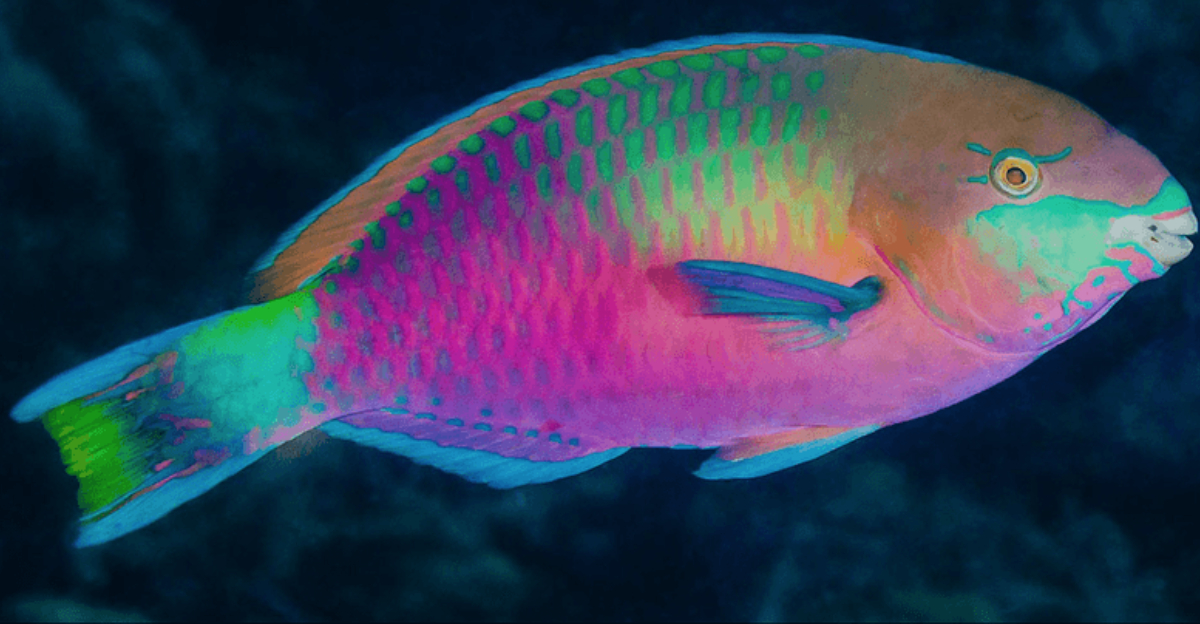In the animal kingdom, some creatures have the amazing ability to change their shape, color, or even gender.
These adaptations help them survive in their environments, confuse predators, attract mates, and thrive in various conditions.
Here, we explore 30 fascinating animals that showcase these extraordinary abilities, each with unique characteristics and survival strategies.
1. Chameleon
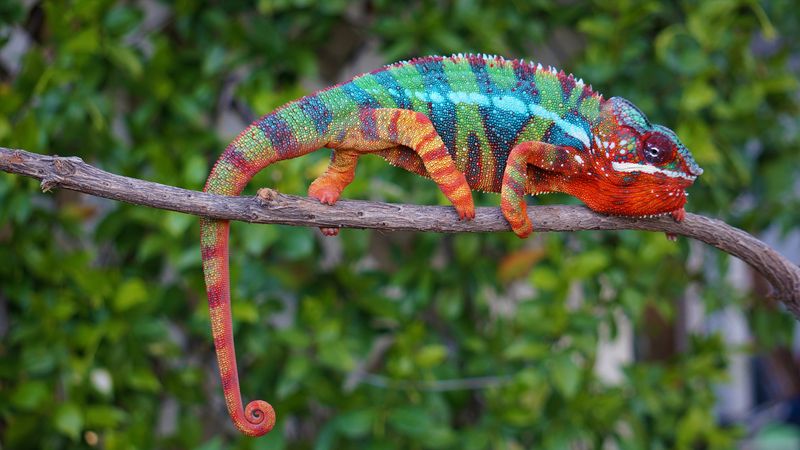
Chameleons are remarkable reptiles known for their ability to change colors. This skill helps them blend into their surroundings to avoid predators.
Chameleons adjust their colors not just for camouflage but also for temperature regulation and communication. Their skin contains special cells called chromatophores that expand or contract to reveal different colors.
Interestingly, a chameleon’s color can also indicate its mood. For example, a bright red or orange may show aggression, while softer hues suggest calmness. This color change ability is not just fascinating but also a crucial survival tool.
2. Cuttlefish
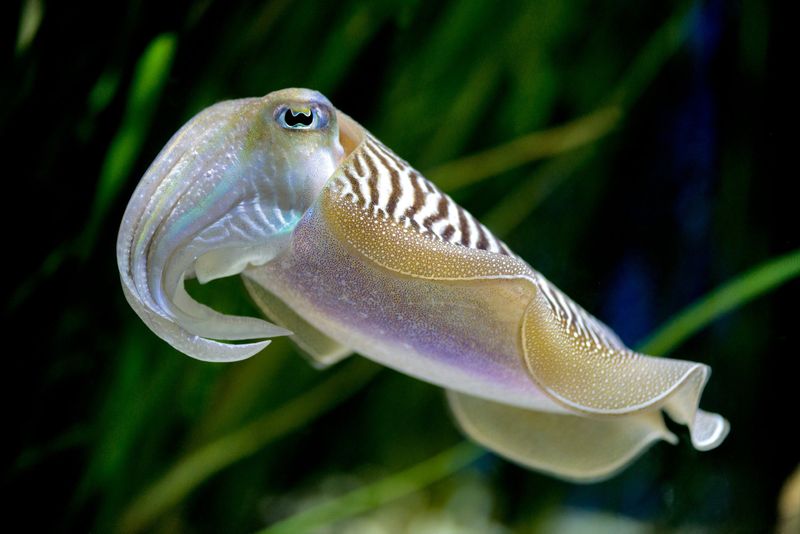
Cuttlefish are masters of disguise, capable of changing their skin color and texture in the blink of an eye. They use this ability to communicate, hunt, and hide from predators.
Their skin contains chromatophores, similar to chameleons, allowing them to blend into their surroundings seamlessly. This skill helps them sneak up on prey or avoid detection from predators.
Cuttlefish can also change the texture of their skin to mimic the ocean floor, enhancing their camouflage. This remarkable adaptation makes them one of the ocean’s most intriguing creatures.
3. Clownfish
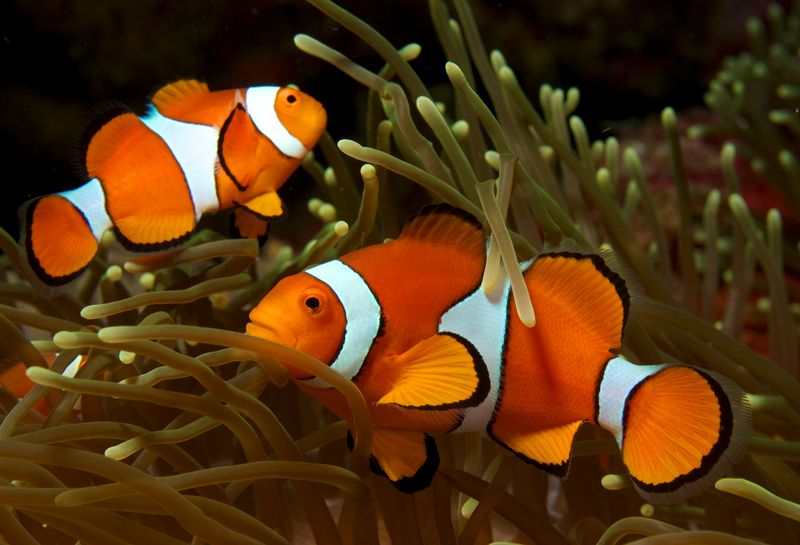
Clownfish have a unique gender-changing ability. In their social structure, the dominant male can transform into a female if the leading female passes away.
This gender change is crucial for maintaining the breeding hierarchy within the group. Clownfish live in a symbiotic relationship with sea anemones, finding protection among their stinging tentacles.
The ability to change gender ensures the group remains balanced and capable of reproduction. This fascinating adaptation highlights the clownfish’s resilience and adaptability in the complex ocean ecosystem.
4. Octopus
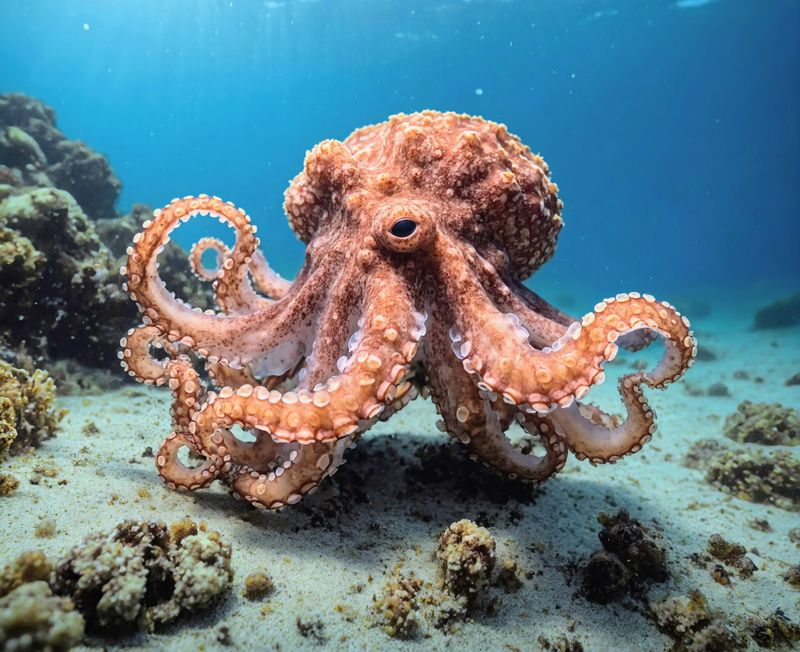
Octopuses are intelligent creatures known for their shape-shifting abilities. They can change both color and texture to blend in with their environment.
Their skin contains chromatophores, allowing rapid color change, assisting in both communication and camouflage. This helps them hide from predators and sneak up on prey.
Octopuses can also alter their body’s shape, squeezing into tight spaces to escape threats. Their flexibility and adaptability make them one of the ocean’s most elusive inhabitants.
5. Flatfish
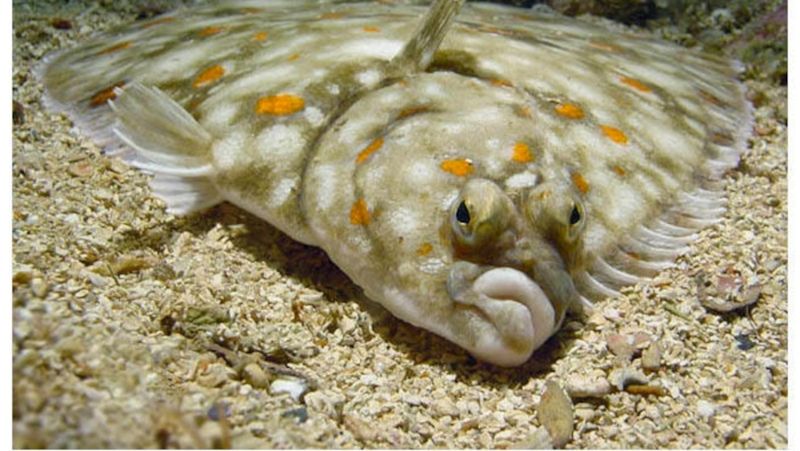
Flatfish, such as flounders, are experts in camouflage. They undergo a fascinating transformation as they mature, shifting their eyes to one side of their body.
This adaptation allows them to lie flat against the ocean floor, blending in with the sand and avoiding predators. Their coloration can also change to match the sea bed, enhancing their disguise.
This unique transformation and camouflage ability highlight the flatfish’s remarkable evolutionary adaptations for survival.
6. Parrotfish
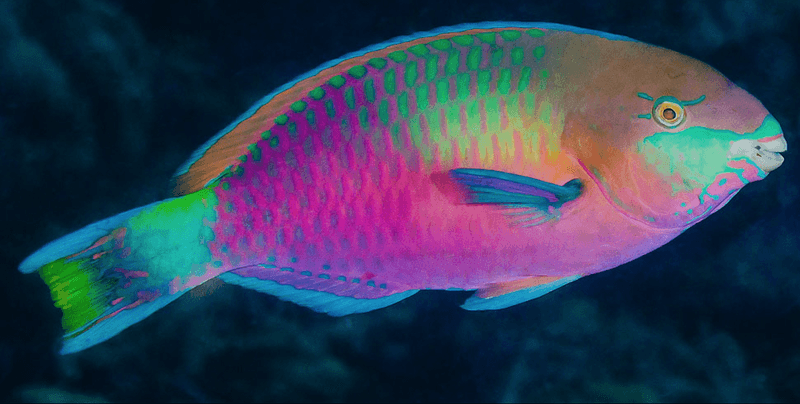
Parrotfish are known for their bright colors and ability to change gender. They start as females and can become males, a process known as sequential hermaphroditism.
This gender change helps balance the population and ensure reproductive success within the coral reef community. Parrotfish play a crucial role in maintaining the health of coral reefs by grazing on algae.
Their vivid colors and transformative abilities make them one of the most striking and important inhabitants of the reef ecosystem.
7. Seahorse
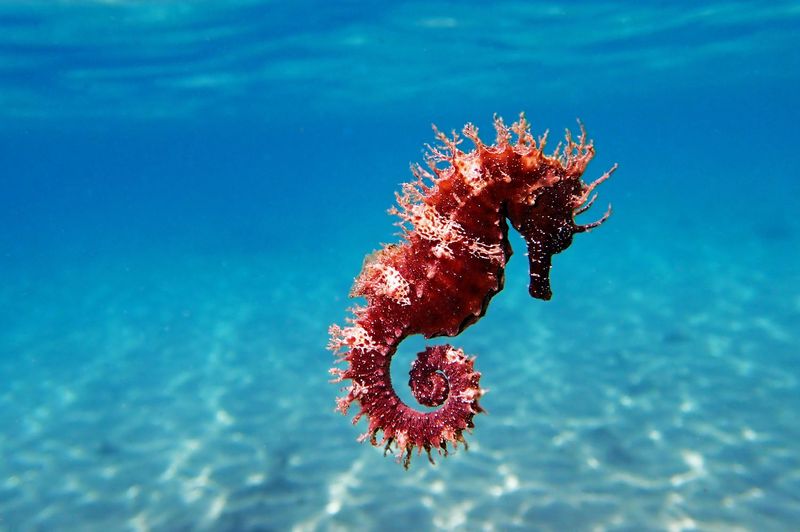
Seahorses have a unique reproductive role, where males become pregnant and carry the offspring. The male seahorse has a specialized pouch for carrying eggs deposited by the female.
This role reversal in reproduction is rare and fascinating in the animal kingdom. Seahorses can also change color to blend in with their surroundings, aiding in camouflage.
Their graceful appearance and unique reproductive strategy make seahorses one of the ocean’s most intriguing creatures.
8. Peacock Flounder
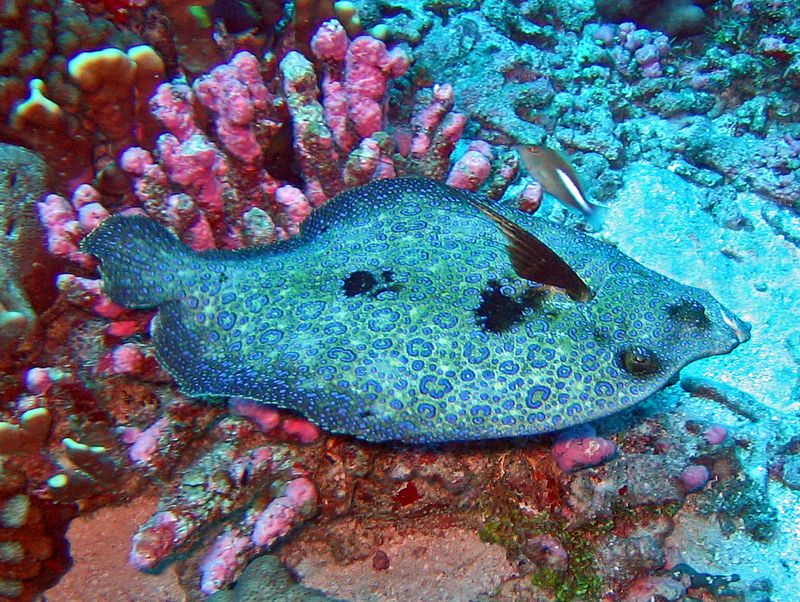
Peacock flounders are experts at blending into their surroundings. They can change colors to match the ocean floor or coral reef they inhabit.
This camouflage helps them avoid predators and ambush prey. Their ability to blend into complex patterns of coral and sand is remarkable.
The peacock flounder’s adaptability showcases the incredible survival strategies found in marine life, making them fascinating subjects to study.
9. Bluehead Wrasse
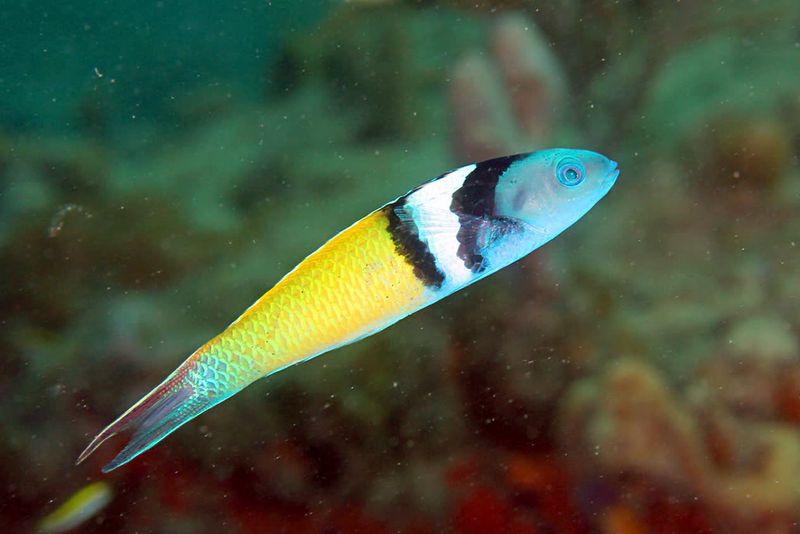
Bluehead wrasses are small fish with the unique ability to change gender. They start life as females and can become males if needed.
This transformation helps maintain social structure and reproductive balance within their groups. Bluehead wrasses are known for their vibrant blue head and colorful bodies.
Their ability to adapt and change gender highlights the complex social dynamics in fish communities, making them a captivating species.
10. Frog
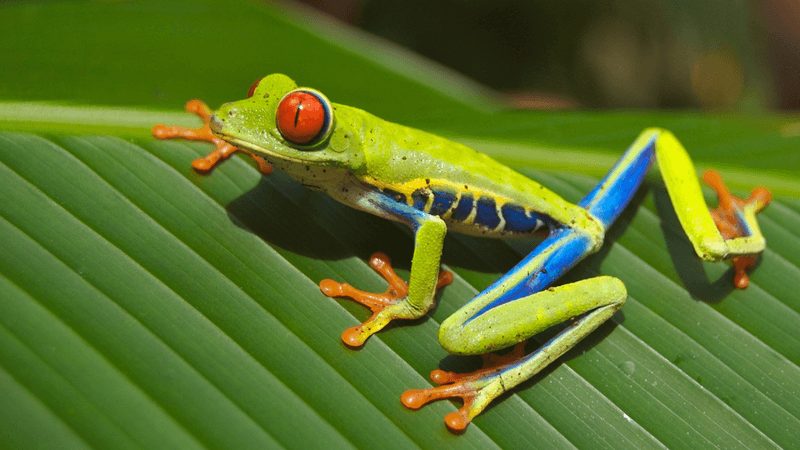
Some frog species can change color to match their surroundings. This adaptation helps them avoid predators and regulate body temperature.
Their skin contains special pigments that allow them to alter their appearance. These changes can happen due to environmental factors or stress.
The ability to change color adds to the frog’s survival toolkit, demonstrating the diverse adaptations in amphibians.
11. Moray Eel
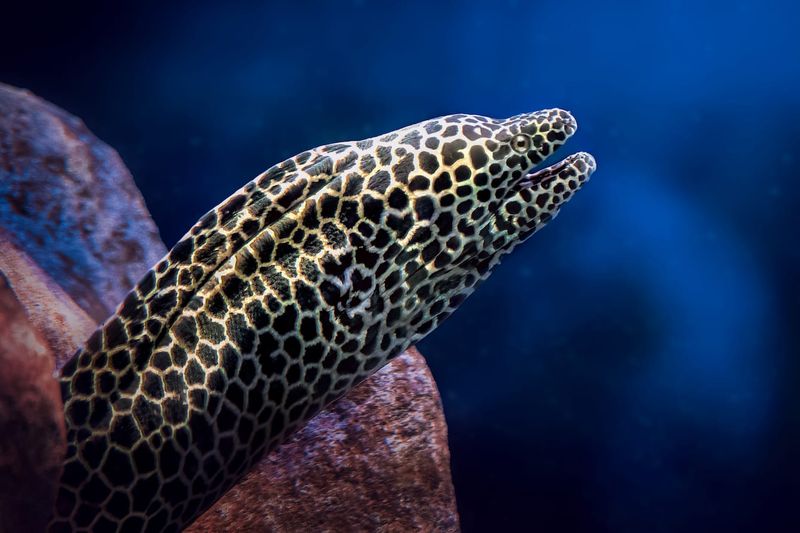
Moray eels can change their color to blend into the coral reefs they inhabit. This camouflage helps them hunt and hide from predators.
Their elongated bodies and sharp teeth make them efficient hunters. The ability to change color adds an extra layer of stealth to their hunting strategy. Moray eels are fascinating creatures, showcasing the complex adaptations of marine predators.
12. Pipefish
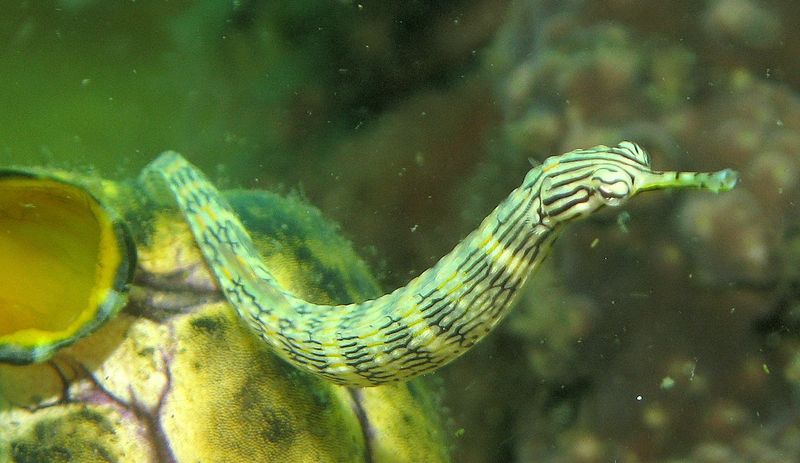
Pipefish are relatives of seahorses, known for their slender bodies and camouflage abilities. They can change color to match the seagrass and surroundings they inhabit.
This color change helps them avoid predators and hunt small prey. Pipefish exhibit unique parental roles, with males carrying the eggs.
Their camouflaging skills and reproductive strategies highlight the diverse adaptations in the natural world.
13. Anole Lizard
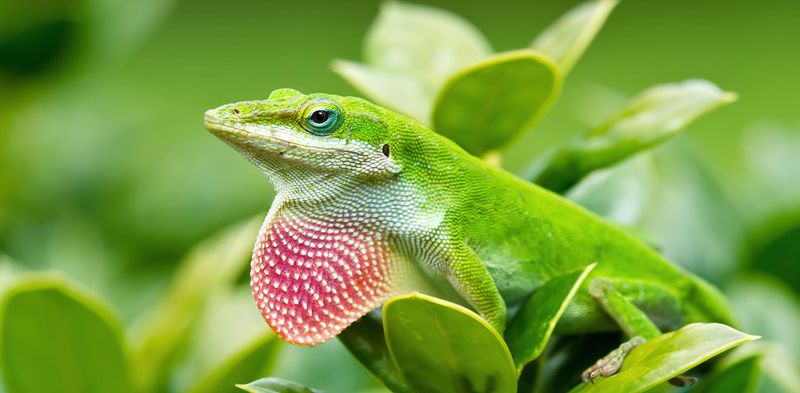
Anole lizards are small reptiles capable of changing their skin color. This ability helps them communicate and regulate their body temperature.
They can shift from bright green to brown, depending on their environment and mood. This color change can also serve as camouflage against predators. Anole lizards are fascinating animals, showcasing the diverse adaptations found in reptiles.
14. Starfish
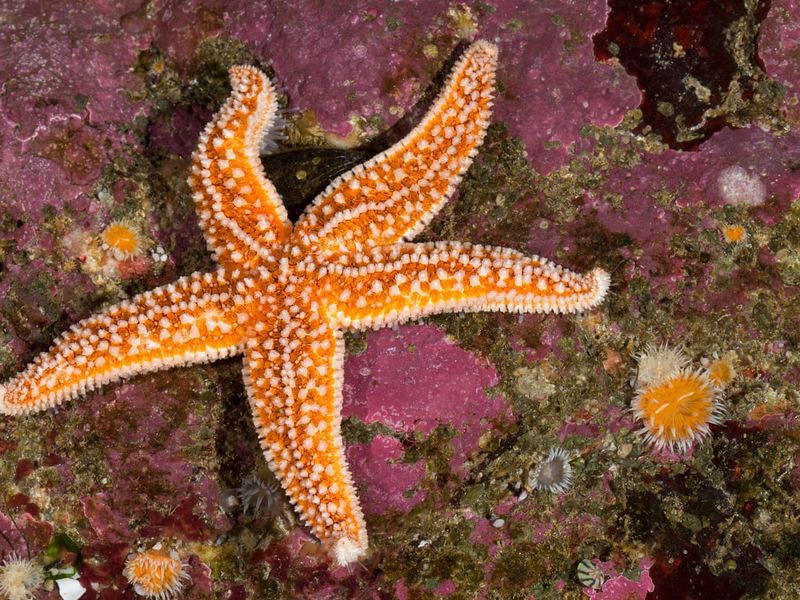
Starfish are known for their remarkable ability to regenerate lost limbs. This adaptation helps them survive predator attacks and environmental challenges.
While starfish don’t change color, their ability to regrow parts is a form of transformation. They come in various colors and patterns, adding to their beauty.
Starfish are resilient creatures, demonstrating the incredible regenerative abilities found in marine life.
15. Mandarinfish
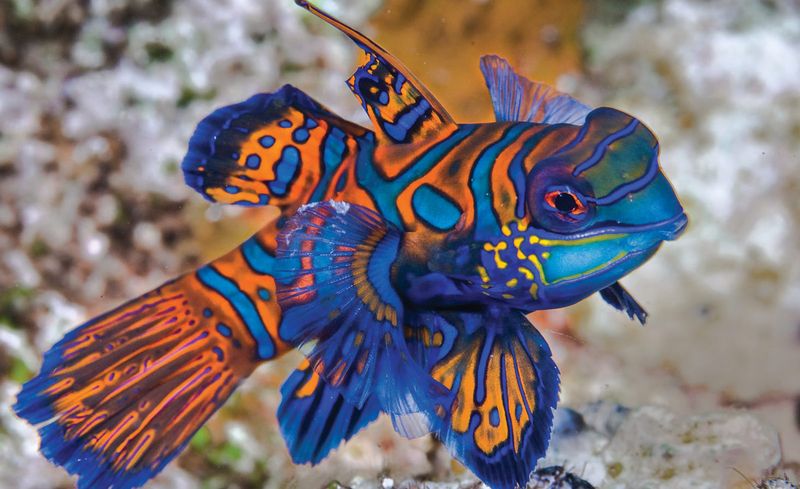
Mandarinfish are famous for their brilliant colors and ability to change appearance. They use their vibrant hues for communication and mate attraction.
These fish are shy and often hide among corals, where their colors blend beautifully. Their ability to change appearance helps them navigate social interactions. Mandarinfish are stunning examples of the vibrant and dynamic life found beneath the ocean’s surface.
16. Leafy Sea Dragon
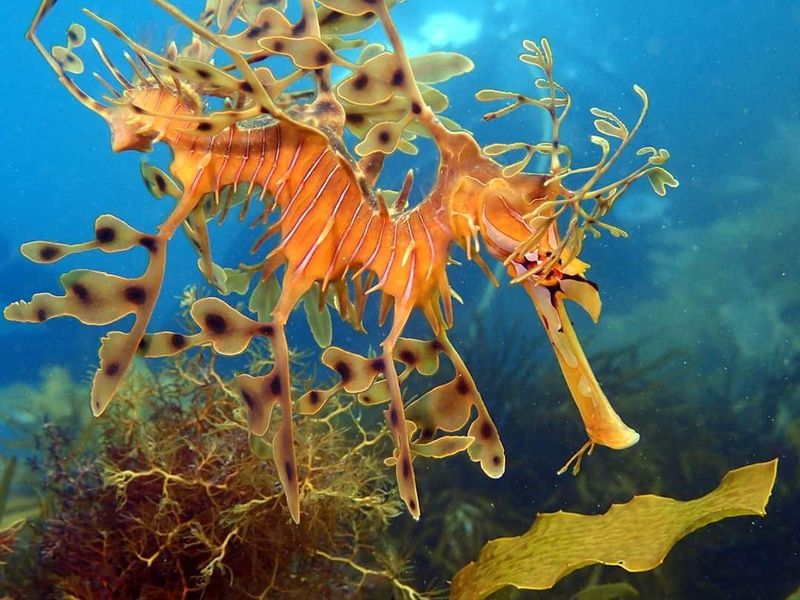
Leafy sea dragons are masters of disguise, resembling floating seaweed. Their leaf-like appendages provide excellent camouflage in their ocean habitats.
This adaptation helps them avoid predators and blend with their environment. Leafy sea dragons are related to seahorses and pipefish, sharing similar reproductive roles.
Their unique appearance and camouflage abilities make them one of the ocean’s most intriguing creatures.
17. Flatworm
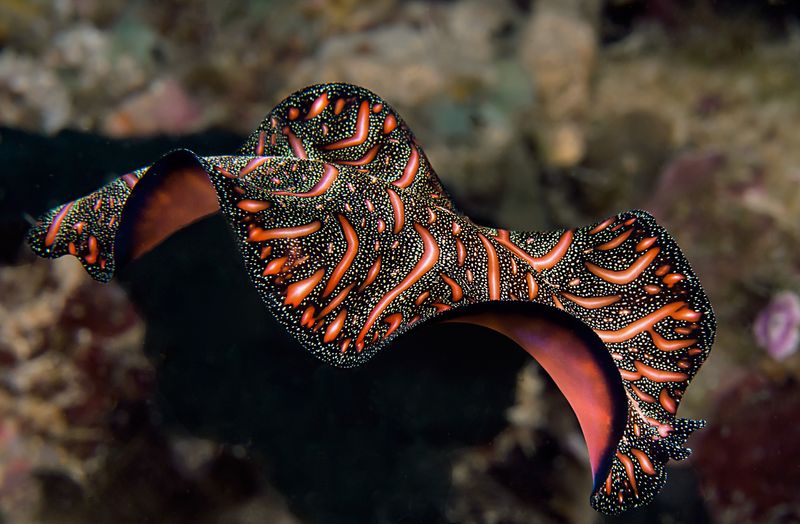
Flatworms are simple yet fascinating creatures, often displaying vibrant colors and patterns. Some can change appearance to blend with their surroundings.
Their ability to regenerate lost parts is another remarkable trait, much like starfish. Flatworms glide over surfaces, using tiny hair-like structures for movement.
Their vibrant appearance and adaptability highlight the diverse life forms found in marine ecosystems.
18. Goblin Shark
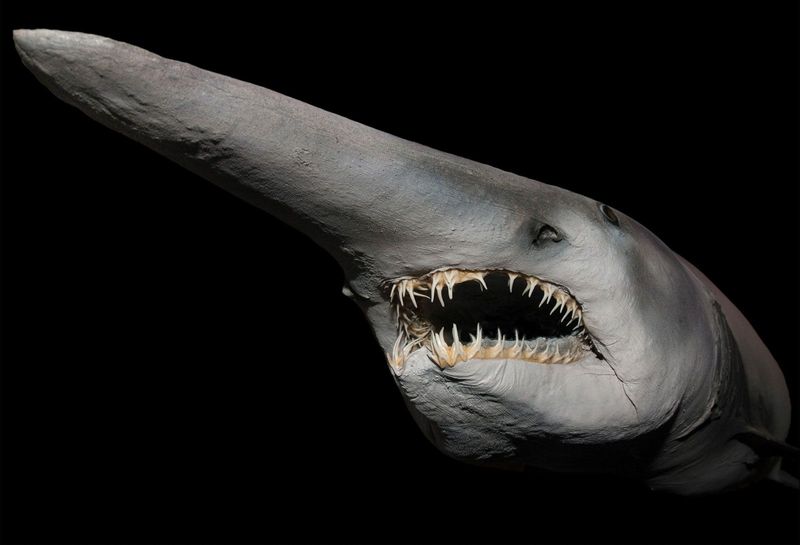
The goblin shark is a deep-sea dweller known for its unique appearance. Its most notable feature is its extendable jaw, which can protrude to catch prey.
This adaptation helps the goblin shark hunt effectively in the dark ocean depths. While it doesn’t change color, its ability to alter its jaw shape is a form of transformation.
The goblin shark’s unusual features and hunting strategies make it a subject of intrigue and mystery in marine biology.
19. Nudibranch
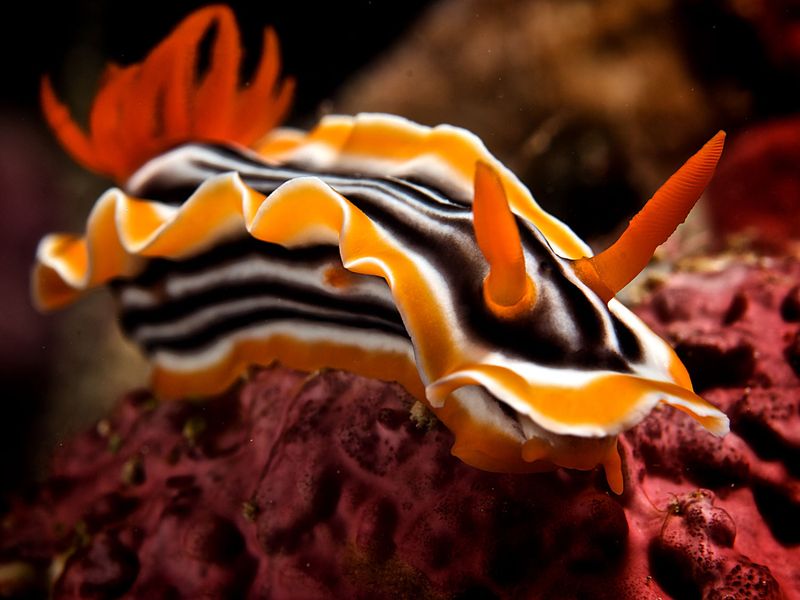
Nudibranchs are soft-bodied marine mollusks known for their stunning colors and intricate patterns. They use these colors for communication and deterrence.
Some nudibranchs can change appearance to blend with their environment, avoiding predators. They often feed on sponges and other small marine life. Nudibranchs are a visual delight, demonstrating the beauty and complexity of life beneath the sea.
20. Surgeonfish
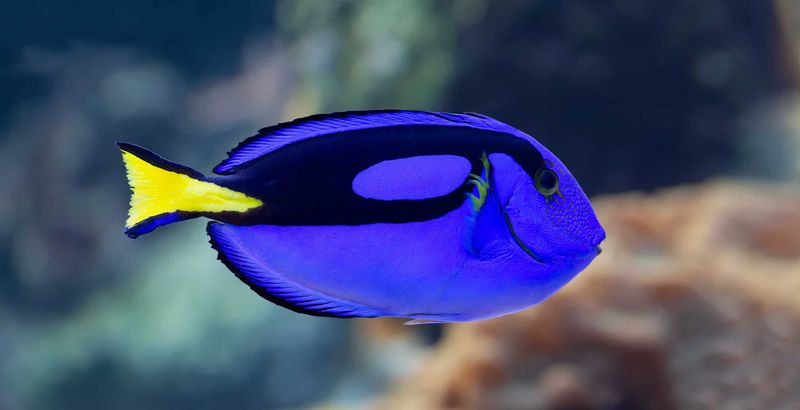
Surgeonfish are known for their bright colors and the ability to change them. This ability helps them communicate and adapt to their surroundings.
Their vibrant appearance and swift movements make them a common sight in coral reefs. Surgeonfish play a role in maintaining reef health by grazing on algae.
Their color-changing abilities and ecological role highlight the intricate relationships in marine ecosystems.
21. Hawkfish
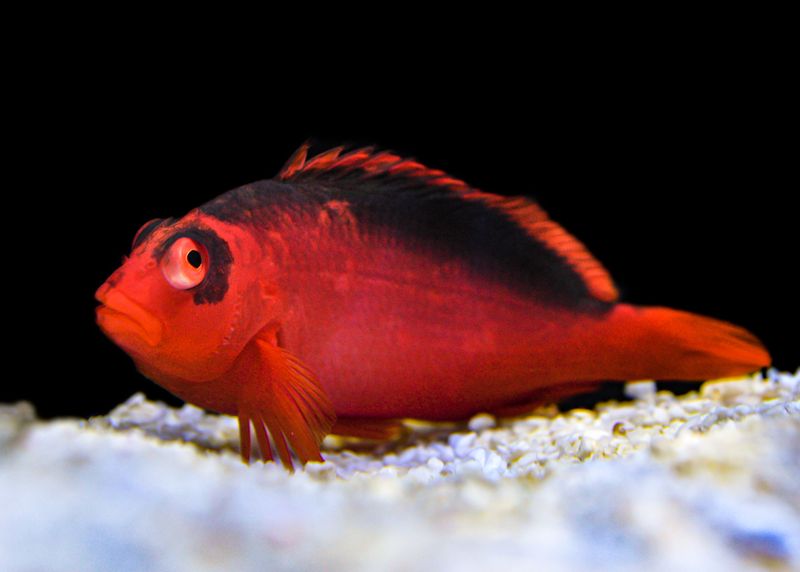
Hawkfish are small, colorful fish often found perched on corals. They can change colors to blend into their surroundings, aiding in camouflage.
This ability helps them hunt prey and avoid predators in the complex reef environment. Hawkfish are known for their bright patterns and unique behaviors.
Their adaptability and striking appearance make hawkfish fascinating subjects in marine studies.
22. Leaf Chameleon
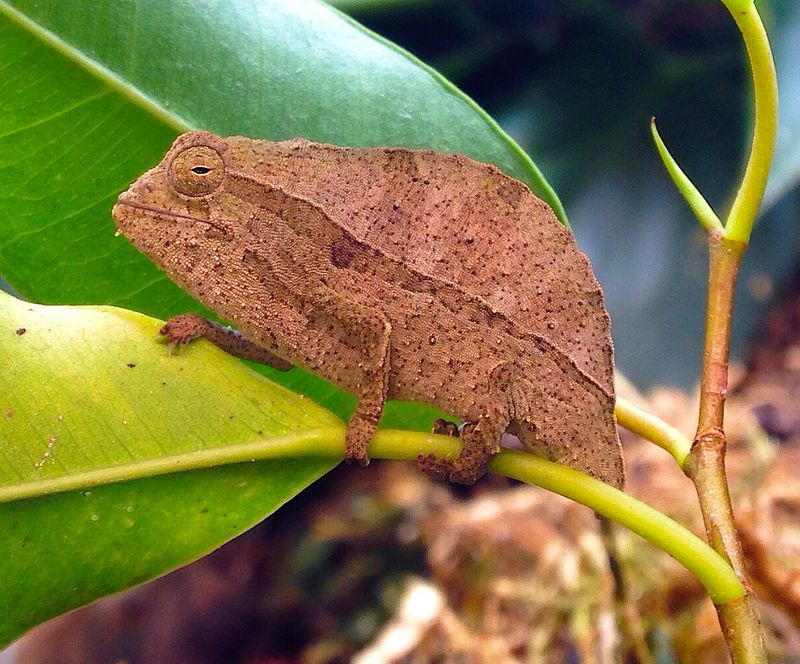
Leaf chameleons are tiny reptiles with exceptional camouflage abilities. They can blend seamlessly with leaves and branches to avoid predators.
Their size and color-changing skills make them masters of disguise in their forest habitats. Leaf chameleons use chromatophores for rapid color shifts.
These adaptations allow them to survive and thrive, demonstrating the incredible diversity of life in forest ecosystems.
23. Weedy Sea Dragon
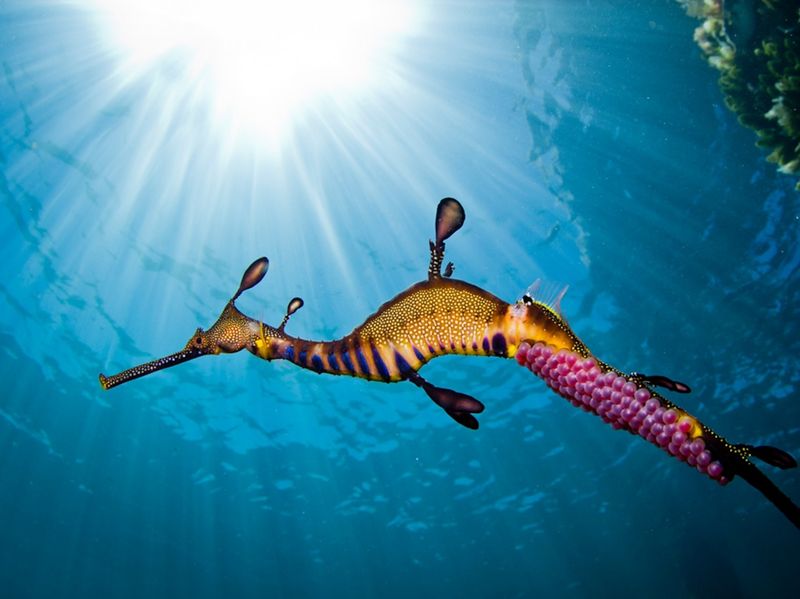
Weedy sea dragons are related to seahorses and share their unique reproductive roles. Males carry the eggs on their tails, a rare trait in the animal kingdom.
Their leaf-like appendages provide excellent camouflage in seaweed-dense waters. This ability helps them avoid predators and blend into their surroundings.
The weedy sea dragon’s fascinating appearance and reproductive strategies make them a captivating study in marine life.
24. Argonaut
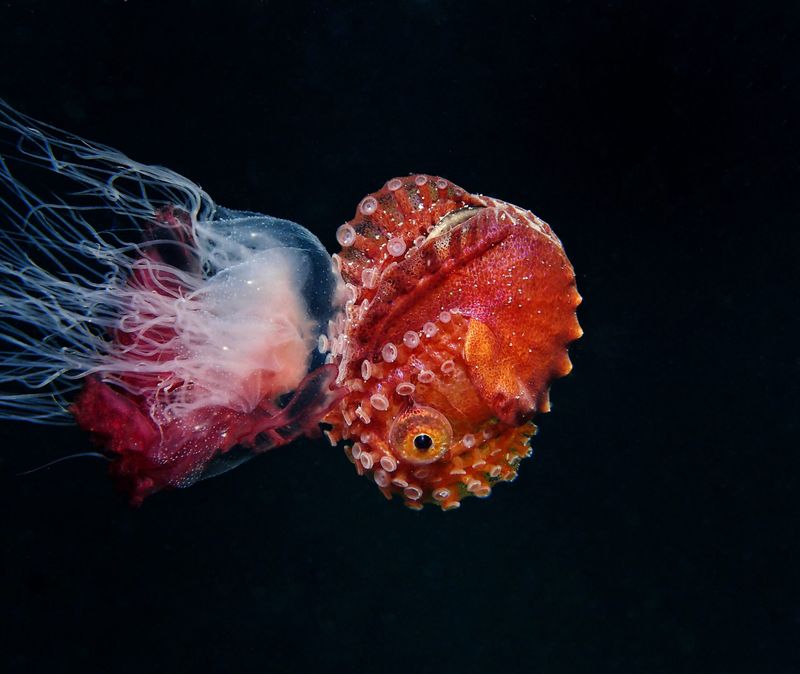
Argonauts, also known as paper nautiluses, are a type of octopus. Females create a delicate shell to protect their eggs, unlike other octopuses.
This unique adaptation aids in reproduction and protection. Argonauts can control their buoyancy, allowing them to float in open waters.
Their distinct features and reproductive strategies highlight the diverse adaptations found in marine mollusks.
25. Gobies
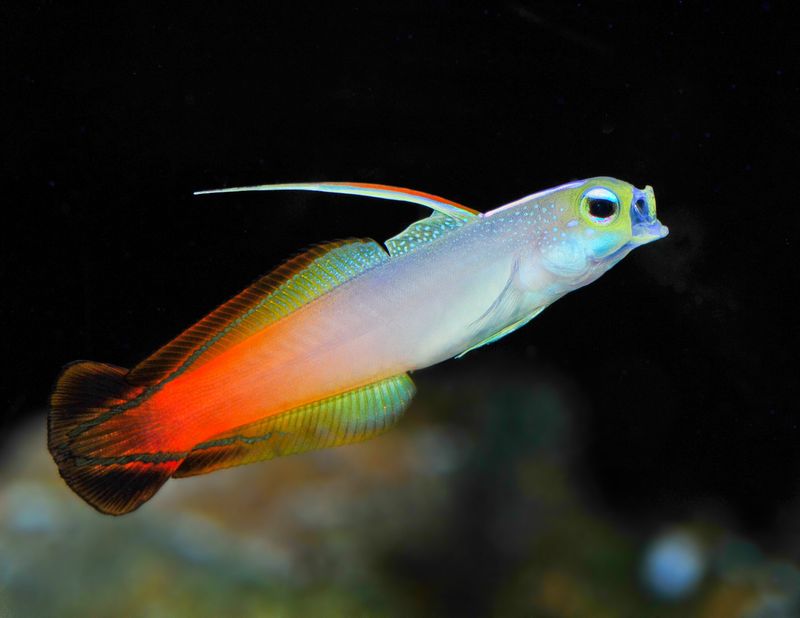
Gobies are small fish known for their ability to change color to blend into their surroundings. This camouflage helps them avoid predators and hunt small prey.
They often form symbiotic relationships with other marine animals, enhancing their survival. Gobies display a wide range of colors and patterns. Their adaptability and ecological roles make them an important part of coral reef ecosystems.
26. Stonefish
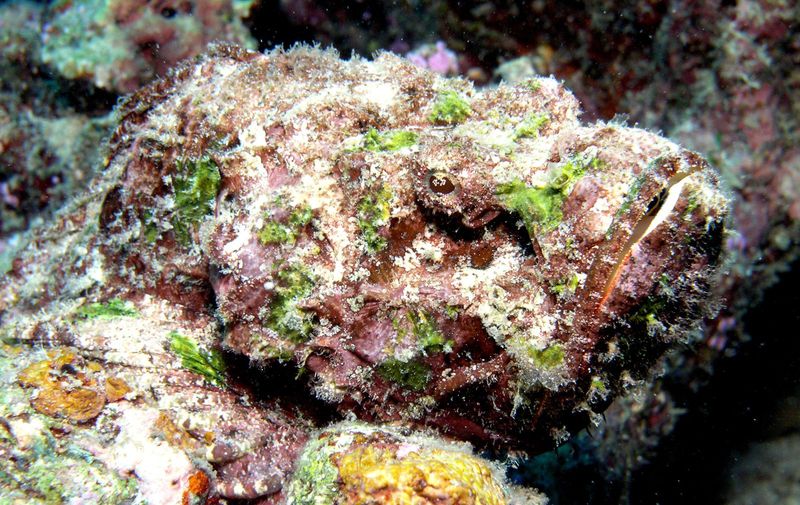
Stonefish are masters of disguise, known for their ability to blend into the ocean floor. Their appearance mimics rocks, making them hard to spot.
This camouflage helps them ambush prey and avoid predators. Stonefish are also venomous, with spines capable of delivering painful stings. Their unique adaptations make stonefish fascinating yet dangerous inhabitants of the ocean.
27. Mimic Octopus
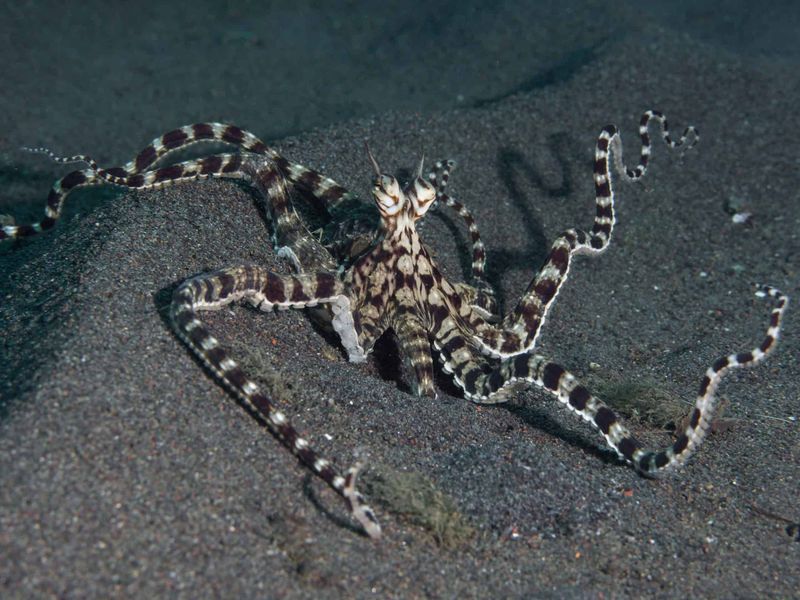
The mimic octopus is a remarkable creature capable of imitating other marine animals. It can change its color, shape, and behavior to resemble different species.
This adaptation helps it avoid predators by confusing them. The mimic octopus can imitate lionfish, flatfish, and even jellyfish.
Its incredible mimicry skills make it one of the most intriguing examples of adaptation in the animal kingdom.
28. Flounder
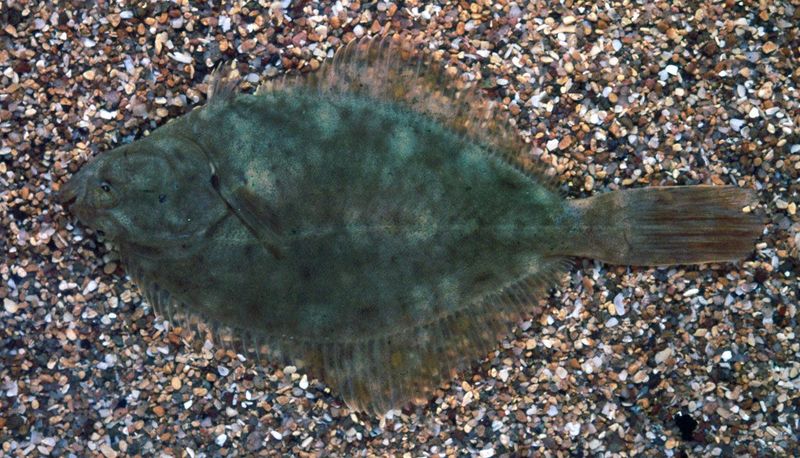
Flounders undergo a unique transformation, moving both eyes to one side of their body as they mature. This adaptation allows them to lie flat and blend into the ocean floor.
Their coloration changes to match the sand, providing excellent camouflage against predators. Flounders are skilled hunters, using their disguise to ambush prey.
Their transformative abilities highlight the incredible evolutionary paths taken by marine creatures.
29. Salmon
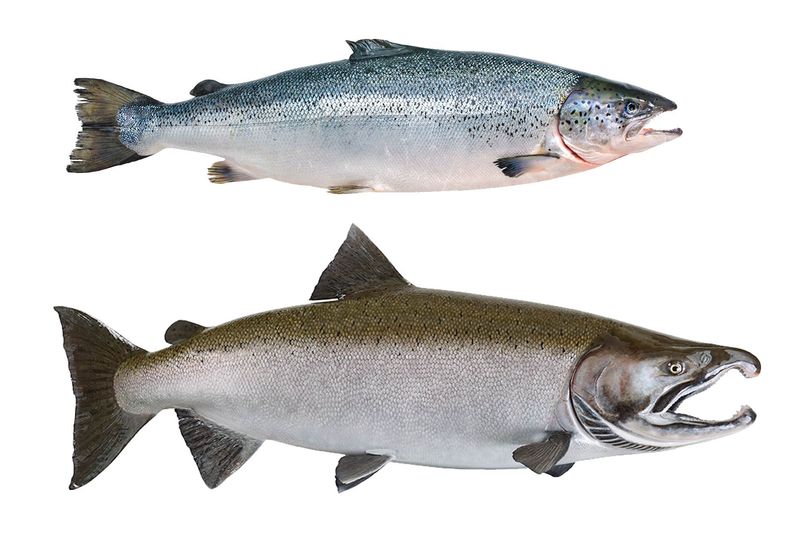
Salmon are known for their incredible life cycle, including a dramatic color change during spawning. They transform from a silvery blue to vibrant reds and greens.
This color shift signals readiness for reproduction, attracting mates and signaling competitors. Salmon undertake long migrations to their spawning grounds, showcasing endurance.
Their life cycle and color change are remarkable examples of adaptation and survival in aquatic environments.
30. Butterflyfish
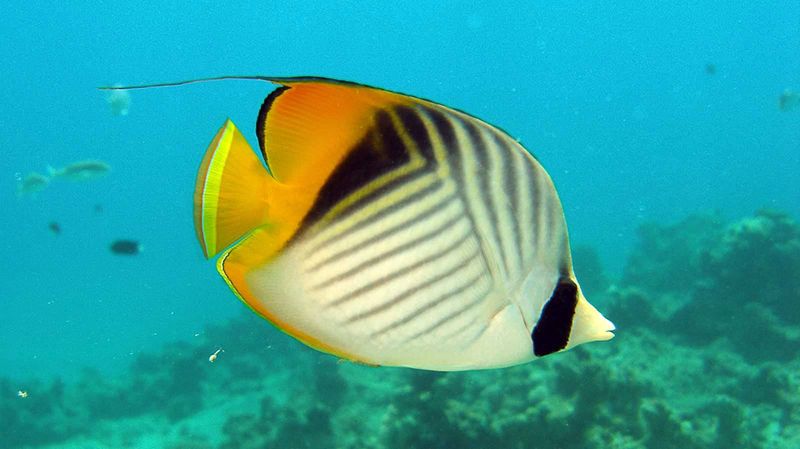
Butterflyfish are known for their beautiful colors and patterns. They can change color, helping them communicate and adapt to their surroundings.
These fish are often found in coral reefs, where their vibrant appearance blends with the environment. Butterflyfish play a role in maintaining reef health by controlling algae.
Their color-changing abilities and ecological contributions make them important players in marine ecosystems.

